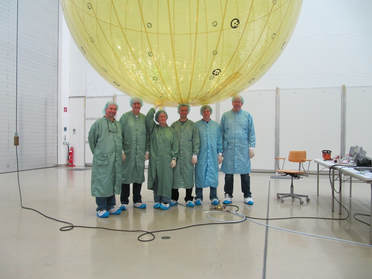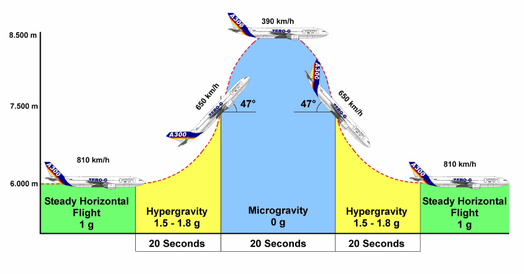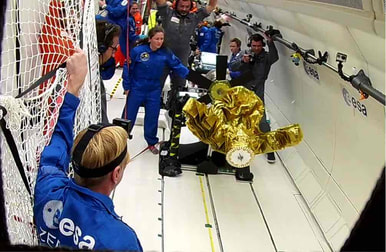|
Blog written by Tanja Lehmann, Electrical Test Engineer The end of last year (5th Dec 2017) was very special as it saw the successful testing on a parabolic flight of the MIRIAM-2 (Main Inflated Reentry Into the Atmosphere Mission) technology, part of the ARCHIMEDES (Aerial Robot Carrying High resolution Imaging, Magnetometer Experiment and Direct Environmental Sensors) project of the Mars Society Deutschland e.V.  © Mars Society Germany, 4 m diameter MIRIAM balloon inflated © Mars Society Germany, 4 m diameter MIRIAM balloon inflated MIRIAM-2 is due to be launched into space on a sounding rocket in the autumn of 2019 from Kiruna/Sweden to test the equipment and observe its re-entry behaviour through measurement instruments in the balloon instrument pod. The long term goal is to one day send the probe with its folded balloon (also known as a ballute) to Mars, where the balloon should deploy and inflate, creating drag and slowing the probe as it descends, giving time for measurements to be taken during atmospheric entry. Like any new technology, rigorous testing is essential to ensure it is capable of the task for which it was designed – so how can you test whether a balloon will deploy in the microgravity of space when you are on planet Earth?  Source: ESA Source: ESA The answer is to simulate, as near as possible, the weightless environment that will be encountered in space, and on this occasion the solution lies in the use of a parabolic flight. Each parabola undertaken by the pilots of the specially adapted aircraft gives a zero gravity period of around 22 seconds, a period in which experiments can be conducted, and each flight carries out around 31 parabolas. MIRIAM-2 was previously tested on a 2015 parabolic flight, when unfortunately the deployment mechanism failed to eject the balloon sufficiently, so it was back to the drawing board for the team to improve the design.  © Dr. Yarjan Abdul Samad © Dr. Yarjan Abdul Samad The upgraded ejection system was once more put to the test on the 5th December 2017, when it flew again as part of the 68th ESA parabolic flight campaign in Bordeaux, on board an Airbus A310 ZERO-G. As can be seen in the below video, during the 27th of 31 parabolas, the balloon container was expelled by a spring force, and subsequently, the container walls flapped outwards to release the balloon package. The balloon material attached to the pod successfully moved away from the test rig and would have been ready for inflation, had this been the real event. All four GoPro cameras recorded video data flawlessly and the controller was also able to capture all the sensor data. As a point of interest related to parabolic flights, I have often been asked regarding how it feels to be in microgravity, so I thought I would add a personal note here about how I perceived the sensation.
Although in reality it is a free-fall condition, it never felt like I was falling. It is instead a feeling of relief, of complete freedom. It feels totally natural and I somehow felt at home. If you have ever had a dream in which you were floating, then this is the feeling that really matches it. Weightlessness cannot be compared with swimming or any other kind of suspension, because it does not simply come from outside, it is something that goes through everything, it can be felt within the body and it becomes part of oneself. And it is something I will always be longing for! You can find out more about the German Mars Society and MIRIAM-2 project at: www.marssociety.de (german) and www.zerog2002.de/english.html Comments are closed.
|
Welcometo the InnovaSpace Knowledge Station Categories
All
|
InnovaSpace Ltd - Registered in England & Wales - No. 11323249
UK Office: 88 Tideslea Path, London, SE280LZ
Privacy Policy I Terms & Conditions
© 2024 InnovaSpace, All Rights Reserved
UK Office: 88 Tideslea Path, London, SE280LZ
Privacy Policy I Terms & Conditions
© 2024 InnovaSpace, All Rights Reserved
 RSS Feed
RSS Feed